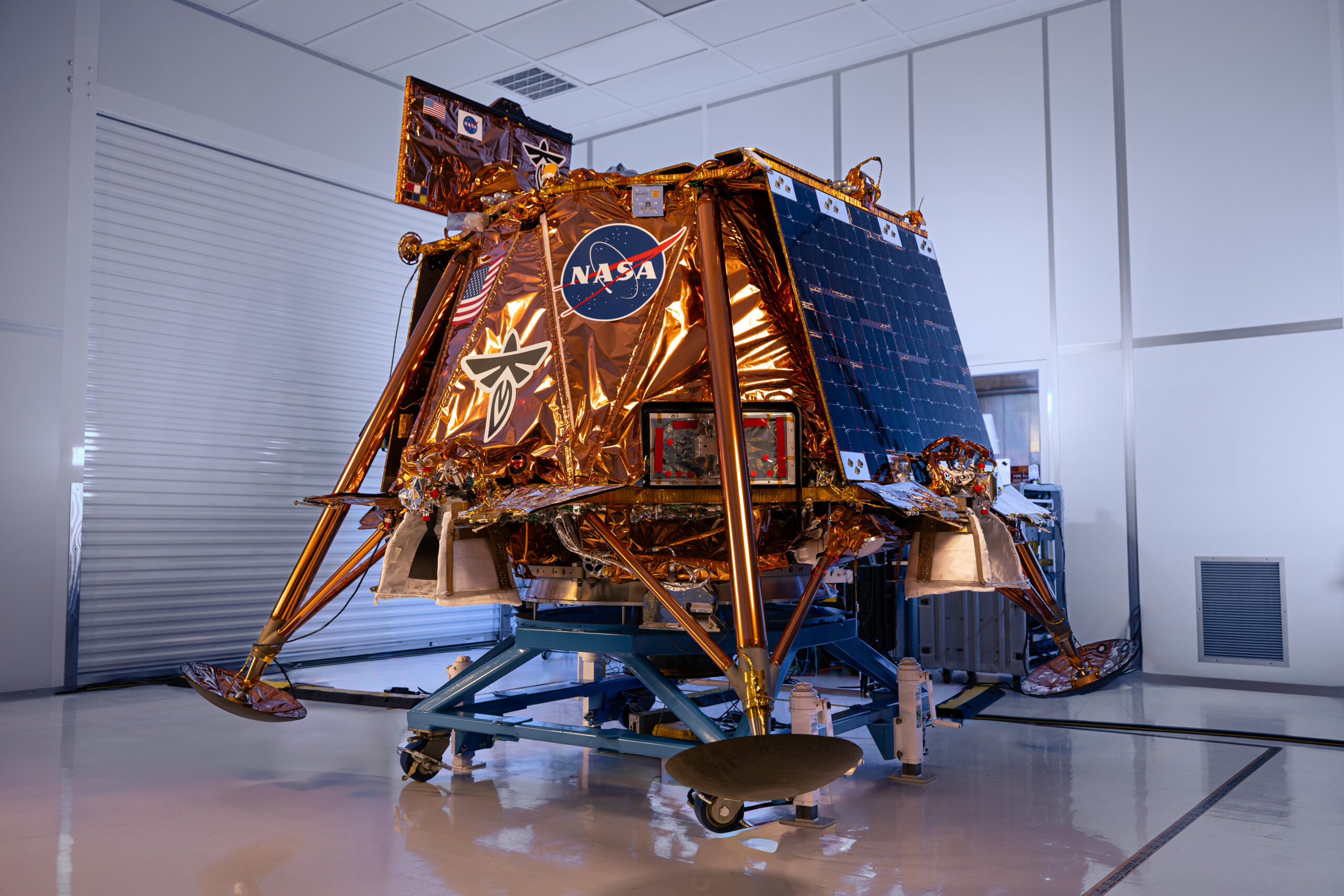Firefly Aerospace’s Blue Ghost Mission 1: Journey to the Moon with NASA
NASA, in collaboration with Firefly Aerospace, is set to embark on a remarkable lunar mission as part of the agency’s Commercial Lunar Payload Services (CLPS) initiative and Artemis campaign. This mission, known as Blue Ghost Mission 1, aims to deliver essential science and technology payloads to the Moon. Scheduled for launch on January 15, this mission represents a significant step in NASA’s Moon to Mars exploration strategy. Let’s delve into the details of this exciting mission and explore what it means for the future of lunar exploration.
Launch Details and Coverage
Firefly Aerospace’s Blue Ghost Mission 1 will be launched aboard SpaceX’s Falcon 9 rocket from Launch Complex 39A at NASA’s Kennedy Space Center in Florida. The launch is a key component of NASA’s efforts to leverage commercial partnerships in its lunar exploration endeavors. The mission launch will be covered live on NASA+, with pre-launch events beginning on January 13. Interested viewers can find more information on how to watch these events on NASA’s official website at NASA Live.
The Journey to the Moon
Following the successful launch, the Blue Ghost lander will embark on a 45-day journey to the Moon. The spacecraft is expected to touch down on the lunar surface in early March. The primary objective of this mission is to carry 10 NASA science investigations designed to enhance our understanding of the lunar environment and aid in preparations for future human missions to the Moon.
Science Experiments and Technological Demonstrations
The Blue Ghost Mission 1 is not just about reaching the Moon; it is about advancing lunar science and technology. The mission will conduct several scientific investigations that focus on critical areas such as:
- Lunar Subsurface Drilling Technology: This experiment aims to test advanced drilling techniques that can penetrate the Moon’s surface, allowing scientists to study its composition and geological history.
- Regolith Sample Collection Capabilities: Regolith refers to the layer of loose, fragmented material covering solid rock. Understanding how to collect and analyze these samples is essential for future lunar exploration.
- Global Navigation Satellite System (GNSS) Abilities: The mission will test the capabilities of GNSS technology in the lunar environment, which can play a crucial role in navigation and communication for future lunar missions.
- Radiation Tolerant Computing: Space is a harsh environment, and this experiment seeks to develop computing systems that can withstand high levels of radiation, ensuring the reliability of technology used in space missions.
- Lunar Dust Mitigation Methods: Lunar dust poses challenges for equipment and operations on the Moon. This experiment will explore methods to mitigate its effects, which is vital for long-term lunar exploration.
The data collected from these experiments will not only advance lunar science but also provide valuable insights into how space weather and cosmic forces affect Earth, potentially benefiting humanity.
Media Coverage and Accreditation
While the deadline for media accreditation for in-person coverage of this launch has passed, NASA has provided comprehensive guidelines for media accreditation on their official website. For further inquiries, interested parties can reach out via email at ksc-media-accreditat@mail.nasa.gov.
Schedule of Events and Key Participants
To ensure a comprehensive understanding of the mission, NASA has organized several events and teleconferences leading up to the launch:
- Monday, January 13: A lunar science media teleconference will be held at 2:30 p.m., featuring Chris Culbert, CLPS program manager, and Maria Banks, CLPS project scientist. The audio of the teleconference will be available on NASA’s website.
- Tuesday, January 14: At 1 p.m., a lunar delivery readiness media teleconference will take place. Participants include Nicola Fox, associate administrator of the Science Mission Directorate at NASA Headquarters, Jason Kim, CEO of Firefly Aerospace, Julianna Scheiman, director of NASA science missions at SpaceX, and Mark Burger, launch weather officer from Cape Canaveral Space Force Station.
Both teleconferences will be streamed live on NASA’s website, and media representatives can ask questions via phone. Details for accessing the teleconferences can be obtained by contacting the Kennedy newsroom.
Launch Day Coverage
On January 15, NASA will begin its launch coverage at 12:30 a.m. on NASA+ and the agency’s website. The actual launch is scheduled for 1:11 a.m. Eastern Standard Time. NASA will provide a "tech feed" of the launch without commentary on its media channel for those interested in a more technical perspective. Additionally, launch day coverage will be available on NASA’s website, including live streaming and blog updates.
Engaging the Public and Social Media
The excitement of the Blue Ghost Mission 1 launch extends to the public, who can register to attend virtually. Registrants will receive mission updates, activities, and a virtual guest passport stamp. To engage with the mission on social media, individuals are encouraged to use the hashtag #Artemis and follow NASA’s accounts on platforms like X (formerly Twitter), Facebook, and Instagram.
NASA’s Spanish Language Coverage
For Spanish-speaking audiences, NASA provides coverage through NASA en español on various social media platforms, including X, Instagram, Facebook, and YouTube. This initiative ensures that a wider audience can stay informed about the mission’s progress.
Expanding Lunar Exploration Horizons
The Blue Ghost Mission 1 is a testament to the collaborative efforts between NASA and commercial partners like Firefly Aerospace. It not only advances lunar science but also sets the stage for future lunar exploration missions. By leveraging cutting-edge technology and scientific investigations, NASA continues to pave the way for humans returning to the Moon and eventually venturing to Mars.
In conclusion, the Blue Ghost Mission 1 is a significant milestone in NASA’s journey to explore the Moon and beyond. With its array of scientific experiments and technological demonstrations, this mission promises to deepen our understanding of the lunar environment and contribute to the broader goals of space exploration. Stay tuned to NASA’s official channels for live coverage and updates as this exciting mission unfolds.
For more Information, Refer to this article.


































